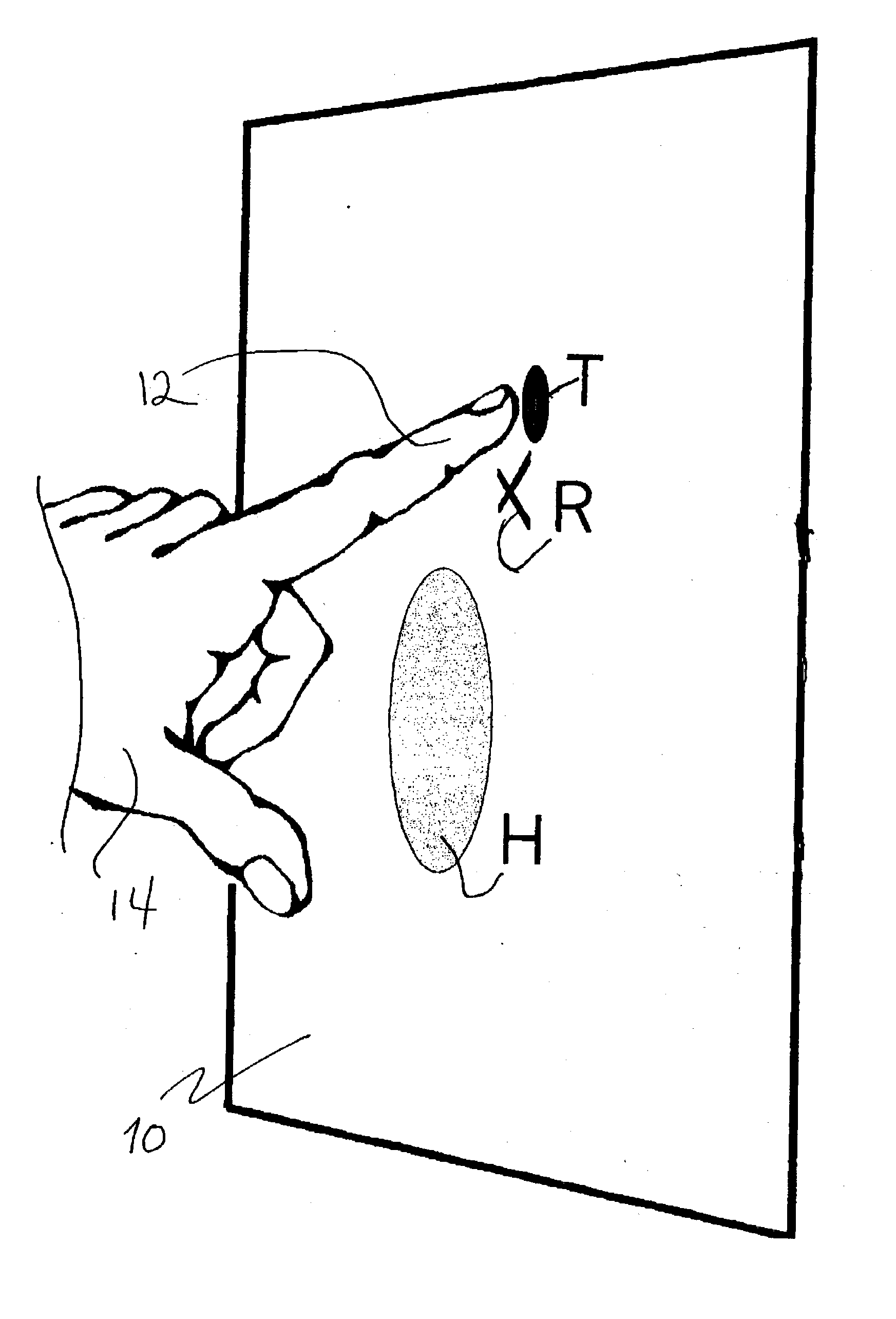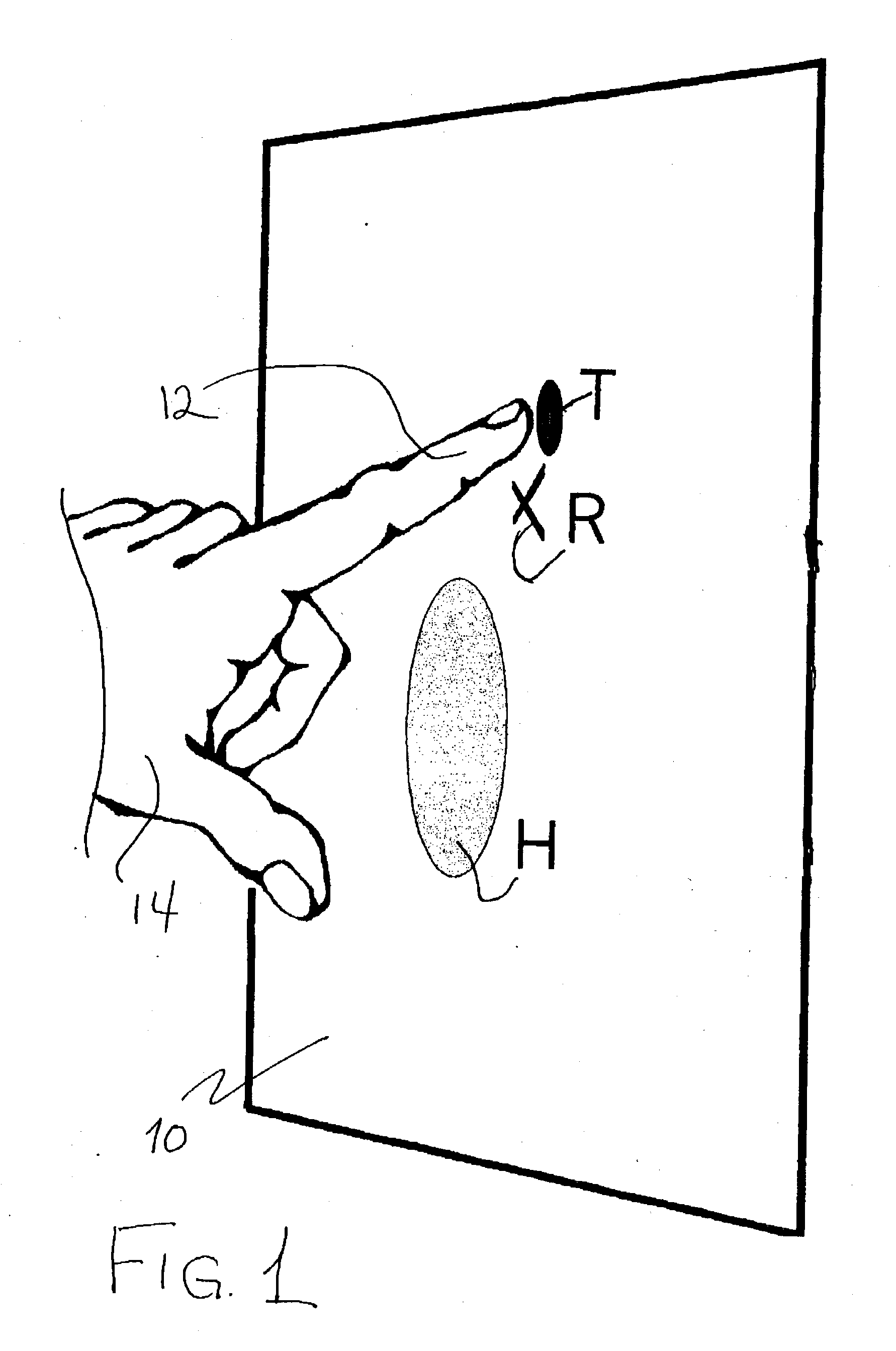Touch screen detection apparatus
a detection apparatus and touch screen technology, applied in the direction of instruments, cathode-ray tube indicators, electric digital data processing, etc., can solve the problems of affecting the conductive sensing layer, affecting the sensitivity of the touch screen, and causing the effect of handshadow
- Summary
- Abstract
- Description
- Claims
- Application Information
AI Technical Summary
Benefits of technology
Problems solved by technology
Method used
Image
Examples
Embodiment Construction
[0039] A touch detection apparatus 16 in accordance with the invention, as shown in FIG. 2, comprises a capacitive touch screen 10 comprising a transparent conductive layer capacitively coupled to a user's finger 12. As is conventional in the touch screen art, connections from the screen 10 are led to acquisition circuitry 18 for conversion of the signals to digital form. There is normally a set of four raw digital signals at the output of screen 10 that are acquired simultaneously. This signal set represents the capacitive signals X-X', Y-Y' received from the connections to the screen 10.
[0040] The output of the acquisition circuitry 18 is optionally led to a signal filtering means 20 to remove signal noise which may be present and which may be caused by external electric or magnetic fields.
[0041] In apparatus of the invention, the outputs of the filter 20 (or of the acquisition circuit 18 if no filter 20 is used) are supplied to a digital memory 22, which is preferably configured ...
PUM
 Login to View More
Login to View More Abstract
Description
Claims
Application Information
 Login to View More
Login to View More - R&D
- Intellectual Property
- Life Sciences
- Materials
- Tech Scout
- Unparalleled Data Quality
- Higher Quality Content
- 60% Fewer Hallucinations
Browse by: Latest US Patents, China's latest patents, Technical Efficacy Thesaurus, Application Domain, Technology Topic, Popular Technical Reports.
© 2025 PatSnap. All rights reserved.Legal|Privacy policy|Modern Slavery Act Transparency Statement|Sitemap|About US| Contact US: help@patsnap.com



